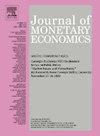沉船:衰退中的流动性约束和回报可预测性
IF 4.3
2区 经济学
Q1 BUSINESS, FINANCE
引用次数: 0
摘要
利用干散货航运业的背景,我证明了实际资产的未来回报具有很强的可预测性,并且与当前资产价格、收益和经济衰退期间的投资负相关。然而,在经济衰退之外并不存在这种关系。这一证据表明,企业在经济低迷时期面临严重的流动性限制,导致资本的市场现金定价和买家的预期回报上升。然而,令人困惑的是,为什么公司不利用在经济衰退时廉价购买资产的机会,例如通过预先安排信贷额度。我建立并估计了一个具有信贷摩擦的竞争性行业的模型,该模型可以定量地说明经济衰退期间的回报可预测性,即使企业可以使用国家或有合同在最需要的时候保留流动性。公司的相对不耐烦限制了他们的风险管理,这意味着即使是资本充足的公司也可能在不利冲击后受到约束。这导致平衡状态下冲击的显著不对称放大。本文章由计算机程序翻译,如有差异,请以英文原文为准。
Sinking ships: Liquidity constraints and return predictability in recessions
Using the context of the dry-bulk shipping industry, I document that future returns on real assets are strongly predictable and negatively related to current asset prices, earnings, and investment during recessions. However, there is no such relationship outside recessions. This evidence points to significant liquidity constraints faced by firms during downturns, resulting in cash-in-the-market pricing of capital and rising expected returns for buyers. It is puzzling, however, why firms would not exploit opportunities to buy assets cheaply in recessions, e.g. by pre-arranging credit lines. I build and estimate a model of a competitive industry with credit frictions that can quantitatively account for return predictability during downturns, even though firms can use state-contingent contracts to preserve liquidity for when they need it most. Firms’ relative impatience limits their risk management, meaning that even well-capitalized firms can become constrained following adverse shocks. This results in significant asymmetric amplification of shocks in equilibrium.
求助全文
通过发布文献求助,成功后即可免费获取论文全文。
去求助
来源期刊

Journal of Monetary Economics
Multiple-
CiteScore
7.20
自引率
4.90%
发文量
90
审稿时长
74 days
期刊介绍:
The profession has witnessed over the past twenty years a remarkable expansion of research activities bearing on problems in the broader field of monetary economics. The strong interest in monetary analysis has been increasingly matched in recent years by the growing attention to the working and structure of financial institutions. The role of various institutional arrangements, the consequences of specific changes in banking structure and the welfare aspects of structural policies have attracted an increasing interest in the profession. There has also been a growing attention to the operation of credit markets and to various aspects in the behavior of rates of return on assets. The Journal of Monetary Economics provides a specialized forum for the publication of this research.
 求助内容:
求助内容: 应助结果提醒方式:
应助结果提醒方式:


